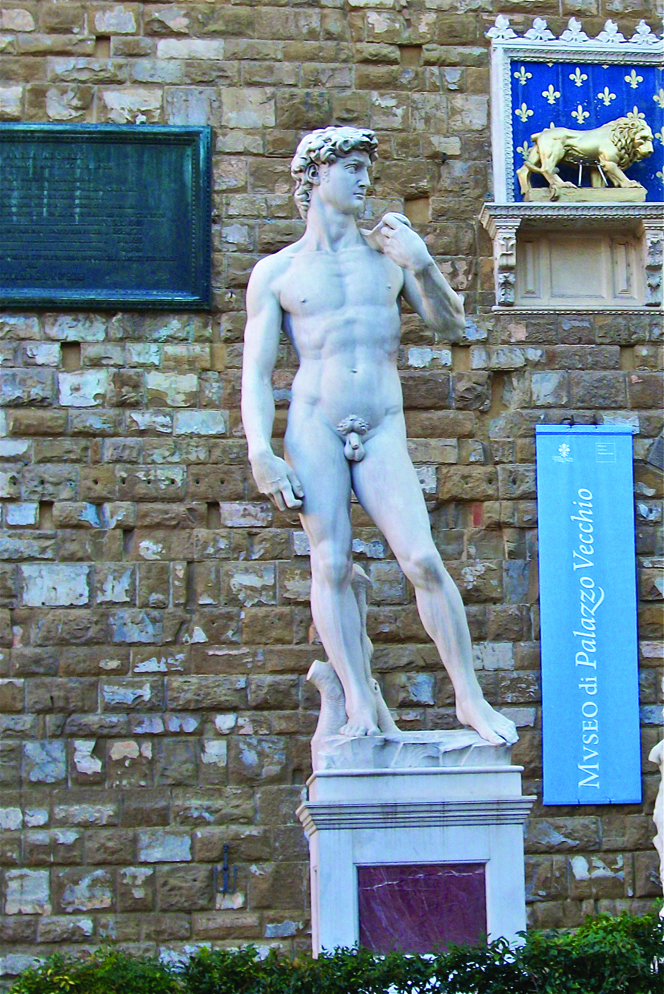The statue of David by Michelangelo is a proud republican statement, placed like a guardian watch dog in front of the town hall of Florence…
Initially commissioned for an external buttress on the Florentine cathedral, the destination changed after Michelangelo finished the over-life-size, five foot tall sculpture, due to its pertinent relevance to contemporary politics. Also, this position would better display the work’s sheer virtuosity.
A specifically chosen committee, comprising some of the leading artists of the day (Leonardo da Vinci, Pietro Perugino, Botticelli, Filippino Lippi) agreed the position where the copy of David stands today, in Piazza della Signoria.
The David statue also needs to be considered in a much broader context. The way in which Michelangelo chose to represent David embodied the essence of the Renaissance, which took root and developed in Florence from the beginning of the 1400s. When David killed Goliath, he was too young to be part of the Israelite army and so when this event was depicted in art, David had always been shown as a young boy. However, Michelangelo decided to represent David in a symbolic way. His statue is recognisable as David only because of the slingshot, but his body took the form of the ideal perfect athlete – a young male adult.
Symbolically this represents the body and soul, separated during the Middle Ages, unified once again. Previously, man was viewed as being incapable of combating earthly temptations which would overpower the soul. The church was the great guardian of the soul and the two, body and soul, were separate for many centuries.
However, the humanistic period was the time when man became the central focus, and faith in the strength of man came to the forefront. Through increasing the mind and nourishing the soul, man himself could discipline the body. Therefore, the perfection of David’s body symbolically expresses the perfect action that David performs, being led by an enlightened mind.
Human greatness could only be achieved, according to the Greeks, when there was balance within body and soul. The Renaissance Christian philosophy takes that same concept, but Christianises it as necessary to get to heaven. In the Renaissance, once more, a person was truly responsible for himself. David’s external perfection represents his faith and the Renaissance shift in mentality to holding paramount man’s potential greatness.

